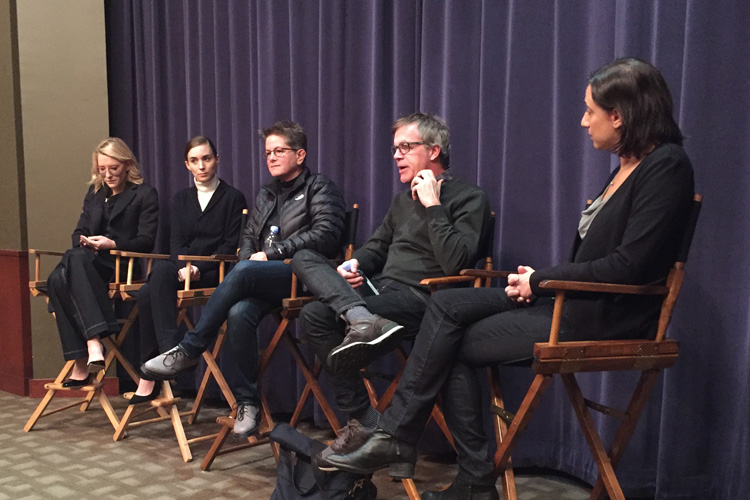
The following questions and answers are excerpted from a conversation that followed the NBR screening of Carol.
How did you all work together during the rehearsal process?
Rooney Mara: We had two week to rehearse before we started shooting in Cincinnati. Really those two weeks just consisted of the three of us [Blanchett and Haynes] sitting around the table and reading through the script with a lot of the other actors. But it’s not like we spent the rehearsal time acting out the scenes; it was more about talking through the movie and forming a relationship and a bond and a trust.
Cate Blanchett: There was a shared understanding of what function every scene had and marking the depth of the subtext. It was also just developing a shared visual language. Often in a film of this scale, a director can feel frustrated with the time that’s having to be spent away from the actors doing location scouts or that the actors have to be called away for costume fitting, but Todd understood that all of those aspects were really a part of an actor’s element of creating a character.
Todd Haynes: Cate was also spending extracurricular time hanging out at the house of Rindy – her daughter in the film that was played by twins. I shared in some of this, but she went beyond and had dinners at their house. We really loved the whole city of Cincinnati and the generosity of the people, and the quality. Our first reason for shooting there was the look of the city, but the people, the extras, and the day players who all contributed were so rich and diverse.
You’ve been with this project for 18 years. What’s the process been like?
Phyllis Nagy: There’s pre-Liz Karlsen [producer] and Number 9 Films and Christine Vachon, and post. The film you screened today came together in about four years from attachment and Liz purchasing the rights to the novel, and today. So relatively quickly, all things considered. But before that, the film was actually developed in the UK with the help of Film4 and primarily Tessa Ross, who would inject money into it every so often for a new script or when it stalled. But really, until the current team came aboard, there was me and a computer that sat on idle for five years. I’d have little spurts depending on who was interested in doing it. But there was no clear…I’ll use the word “vision,” and I don’t mean it pretentiously. Once the current team was in place, then we had that vision.
All the physical interactions were so delicately rendered that a light brush of the shoulders has a strong impact. How much of that body language was in the script, the direction, and the performances?
Blanchett: It’s a dance. You put your hand on the table and then Rooney moves hers away and you think I shouldn’t have put mine on the table, what am I going to do with my hand now? It’s a push and pull thing. There’s so many of those beautiful observations that are often very dangerous and dark in the book, which were peppered throughout the script.
Nagy: All the script can really do in that is suggest a road map for their road trip. But all the rest of it is in the attention to detail and pacing that Todd and the actors and the camera provide. I think it was a happy confluence of all elements. Like a baton handoff in a race and it all worked. And accidentally too. Sometimes things happened on the day of the shoot.
Haynes: It was a combination of all the accidental things you mentioned and then very very specific contact that is often non-verbal. Carol putting her hands on Therese’s shoulder as she plays the piano. That moment was just an adjustment in the camera position that Ed [Lachman, the Cinematographer] and I initially thought would be omitted since we were just adjusting for the next part. But something strange happened and you could feel your stomach shifting in the frame when that hand goes on the shoulder and the camera is doing a re-position. Because the camera doesn’t move much in the movie, you take notice when it does. And we kept it in the cut and it conveyed something bigger that was important for that moment.
This film really beautifully portrays female camaraderie, especially in the scene where Sarah Paulson’s character, Abby, drove Therese back. Can you talk about that scene?
Nagy: Abby doesn’t drive Therese back in the book. Therese drives herself but takes a detour, and she takes on jobs, where she isolates herself to make herself stronger. So she does that apart from Carol in the book. They’re not in the same place, and then she goes back, and we proceed from there the way it does in the book. So, yes, it was an opportunity to actually address the female friendship aspect of this, which is a strong running theme.
Blanchett: Sarah had little screen time but used every second so potently and beautifully. And the lack of ownership that Abby – even though it’s very clear in that it wasn’t a sense of ownership over Carol but a sense of care and investment in her well-being – shows that their relationship might not have necessarily run the way she wanted it to.
Haynes: You remember, Cate, when you saw the first cut, I think it was that scene that really broke you up.
Blanchett: Yeah.
Haynes: That one moment in the film, there’s something Sarah does with her mouth, kind of purses her lips, and there’s just…
Blanchett: It’s that well of stuff she’s sitting on.
Haynes: And you said something about how it just made you think anew what women at this time in history had to deal with, and what their lives were like. It’s just so interesting how an actor can convey so much, as Cate said, with such economy, in such a brief moment.
The film is interesting in how guilt-free the women seem to be over their feelings, for this time period. Can you talk about Therese’s exploration of those feelings?
Mara: Therese doesn’t really have the language to describe the feelings that she’s having. To her, she doesn’t have any judgment on those feelings because it’s so outside of her realm of possibilities. I think there’s a line in the book where she’s talking about Carol and how she couldn’t possibly be in love with Carol because Carol’s a woman, and that doesn’t happen, that’s not possible. I think she’s very naïve about her own feelings.
Blanchett: But there’s a level of exposure I think that they’re both experiencing. You might not necessarily call it love. But I think there’s a nakedness; they feel exposed to one another. Those feelings kind of get tossed around like a washing machine. Often you don’t know why you’re feeling what you’re feeling. It’s just uncontrollable.
Haynes: And there’s a motor that’s kicking in, even when the pieces of those feelings don’t collate. All of a sudden you realize you’re following the motor, and the engine is driving you, and the desire is literally pulling you from place-to-place, completely, sometimes inexplicably, and against all better judgment.
 Welcome to Cate Blanchett Fan, your prime resource for all things Cate Blanchett. Here you'll find all the latest news, pictures and information. You may know the Academy Award Winner from movies such as Elizabeth, Blue Jasmine, Carol, The Aviator, Lord of The Rings, Thor: Ragnarok, among many others. We hope you enjoy your stay and have fun!
Welcome to Cate Blanchett Fan, your prime resource for all things Cate Blanchett. Here you'll find all the latest news, pictures and information. You may know the Academy Award Winner from movies such as Elizabeth, Blue Jasmine, Carol, The Aviator, Lord of The Rings, Thor: Ragnarok, among many others. We hope you enjoy your stay and have fun! 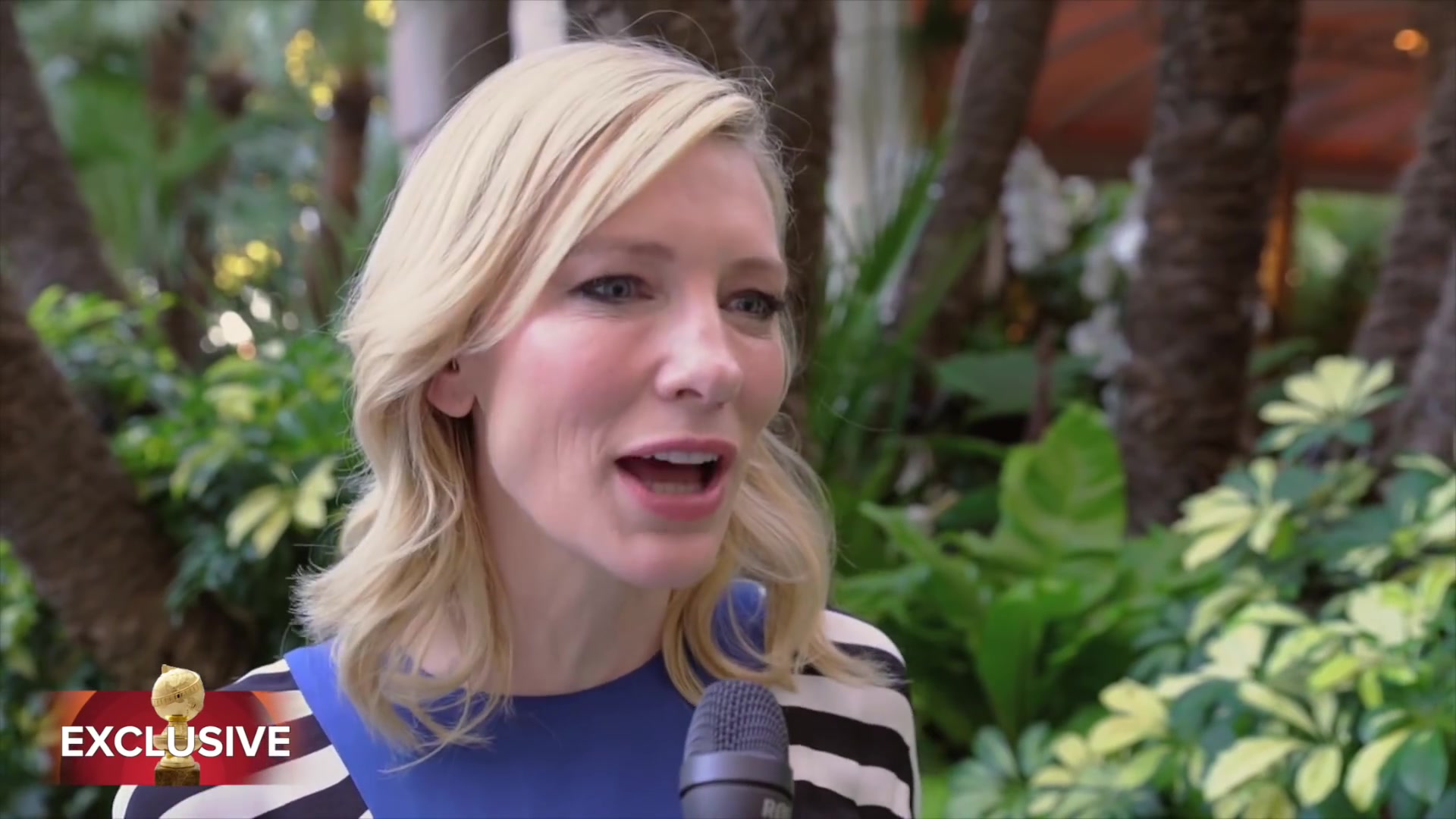
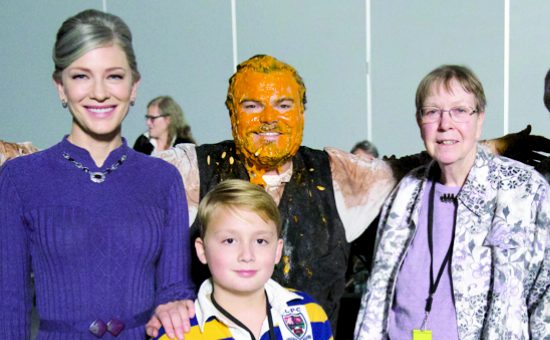
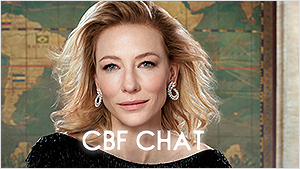
 Black Bag (202?)
Black Bag (202?)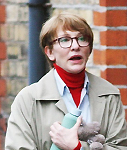 Father Mother Brother Sister (202?)
Father Mother Brother Sister (202?)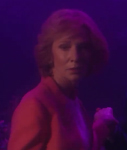 Rumours (2024)
Rumours (2024)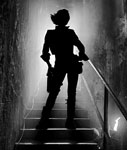 Borderlands (202?)
Borderlands (202?)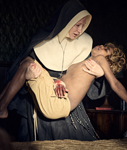 The New Boy (2023)
The New Boy (2023) TÁR (2022)
TÁR (2022)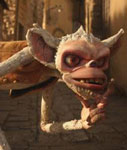 Guillermo Del Toro’s Pinocchio (2022)
Guillermo Del Toro’s Pinocchio (2022)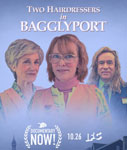 Documentary Now!: Two Hairdressers in Bagglyport (2022)
Documentary Now!: Two Hairdressers in Bagglyport (2022)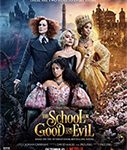 The School for Good and Evil (2022)
The School for Good and Evil (2022)












